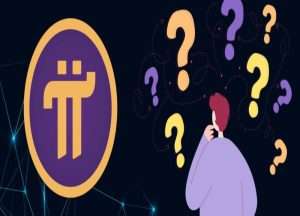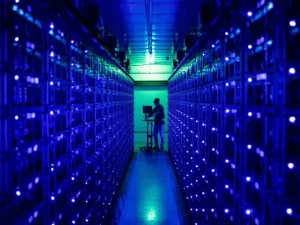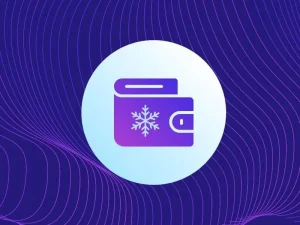Terra LUNA 2.0 And LUNA Classic (LUNC): Get It All in One Guide
Still confused with Do Kwon’s relaunched Terra LUNA 2.0 And LUNA Classic (LUNC)? You can figure it all out after reading this complete guide.
First, What Exactly Is LUNA Classic (LUNC)?
LUNA Classic (LUNC) is the original Terra LUNA coin left over after the recent UST/Luna crash and the launch of a new Terra chain. Do Kwon’s revival plan for Terra LUNA included the creation of a entirely new chain on which future transactions would be conducted. The old chain was divided into the LUNA Classic and the Terra chains. Terra will be the name of the new chain (known as Terra 2.0 or LUNA 2.0), and LUNA Classic (LUNC) is the native token of the original Terra LUNA blockchain.
The term “classic” most likely refers to the hard fork of Ethereum and Ethereum Classic that occurred after Ethereum’s 2017 decentralized automated organization (DAO) breach. As Kwon stated, this seems to be another ploy to promote the UST crash as “Terra’s DAO hack moment” .
The old version of the Terra protocol was extended to support stablecoin developers to build Terra decentralized finance (DeFi) projects, which consisted of two cryptocurrencies: Terra and LUNA. Terra was the stablecoin standard pegged to fiat and other currencies. For example, TerraUSD (UST) is tied to the United States dollar, while TerraKRW (KRT) is tied to the South Korean won.
The native token, Terra (LUNA) was the staking and governance asset of the network. Users stake LUNA to earn a place in governance and become validators and earn rewards. Users can also burn LUNA to mint Terra’s UST token or one tied to their local fiat. However, it’s important to note that while these stablecoins are pegged to the value of fiat, they’re not backed by fiat. Instead, the LUNA token was considered an algorithmic stablecoin.
An algorithmic stablecoin is an asset that gains value through a set of rules rather than being pegged to an asset, itself. This method allows Terra users to invest in the price of these coins linked without having to hold their physical counterparts.
However, on May 9, the so-called stablecoin UST was unpegged, after nearly 18 months of retaining its value against the US dollar. The decoupling created a chain reaction that led to the collapse of the UST and Terra (LUNA) cryptocurrency and Bitcoin, as well as the more significant crypto sector that has yet to fully recover.
This article will discuss the history of Terra blockchain, Terra LUNA 2.0, and the difference between LUNA 2.0 and LUNA Classic (LUNC).
What Is Terra 2.0 or Luna 2.0?
Terra 2.0 is the latest version of Terra (LUNA), a regeneration strategy devised by Do Kwon. The goal is to propose a fork of the Terra blockchain and an airdrop to crypto investors who have been affected by the recent market downturn. The main goal is to restore trust in this stablecoin through the new venture of Terra ecosystem.
Terra 2.0’s policy occasionally issues additional LUNA tokens to crypto investors who purchased more than 10,000 LUNA before the stablecoin suffered catastrophic damage. It will help to prevent Terra 2.0 from being sold immediately. Over 300% of crypto investors’ LUNA tokens will be unlocked at once, with the remaining 70% issued over two years. These crypto investors will receive the new Terra 2.0 tokens after six months.
How LUNA 2.0 Works
To validate transactions on the Terra 2.0 cryptocurrency blockchain, a typical proof-of-stake (PoS) consensus mechanism is used. At any given moment, a total of 130 validators participate in network consensus, with voting privileges determined by the quantity of LUNA 2.0 connected to each node. Gas fees and a fixed yearly LUNA 2.0 inflation rate of 7% are used to generate rewards.
LUNA 2.0 token holders participate in consensus by delegating LUNA 2.0 tokens to a validator of their choice. Validators, like delegates, frequently put up their own stake. Therefore, the validating node keeps the commission in the scheme until it awards prizes to delegators.
The incentives generated by Terra 2.0 coin delegators differ, depending on the voting power of the validators. That being said, those with more voting power naturally earn more rewards, but they must be dispersed among a wider pool of delegators.
Delegating can be done using the Terra Station interface, but be warned that it carries risks. For instance, validators can be penalized for misbehaving, resulting in staked LUNA 2.0 being sliced. Slashing may occur even if the validators are mistakenly turned off for a short period of time.
Terra Blockchain History
Terra was founded in 2018 by Do Kwon and Daniel Shin and launched its mainnet in 2019. Kwon and Shin built Terra to provide users with the stability of fiat currencies while harnessing the power of blockchain technology for faster and cheaper settlements than traditional payment solutions. The two founders also believed that such options would increase blockchain adoption.
The Terra Alliance supports Terra. The Terra Alliance is a group of e-commerce businesses and platforms from around the world driving the adoption of Terra. Businesses within the Terra Alliance have a combined value worth tens of billions and more than 45 million customers across the companies.
How to Distinguish Between LUNA 2.0 And LUNA Classic?
Despite their striking similarities, LUNA Classic and LUNA 2.0 are not the same. The Terra network has been divided into two chains under the new governance plan. Terra Classic with Luna Classic tokens (LUNC) will be the old chain, whereas Terra with LUNA tokens will be the new chain called LUNA 2.0.
The old LUNA will coexist with LUNA 2.0 rather than being replaced entirely. Any decentralized applications (DApps) launched for Terra Luna will be favored for LUNA 2.0, and the development community will start building DApps and providing utility for the new token. However, it does not include an algorithmic stablecoin.
However, this does not exclude the possibility of Terra Classic losing its community as many investors and traders oppose Do Kwon’s recovery plan and the new chain. In truth, Terra Classic retains a considerable following, and the classic community has agreed to start burning as many LUNC tokens as possible to reduce the coin supply and increase the price of individual tokens.
Is Terra Luna 2.0 Safe?
One hundred thirty active PoS validators protect Terra LUNA 2.0. Given the calamity that befell LUNA’s prior iteration, investors in the crypto world have legitimate reservations about the coin’s stability. There has been no evidence of hacking or scams since its launch, but investors should be aware of the risks before committing funds to LUNA 2.0.
The crypto market is highly volatile, and a lack of regulation makes it riskier than the traditional stock market. Therefore, perform your due diligence on blockchain-based projects before investing your hard-earned money.
Should You Invest in LUNA 2.0?
LUNA was a growing powerhouse within the DeFi space before the crash of the Terra ecosystem. In December 2021, Terra surpassed the BNB Smart Chain as the second largest DeFi protocol with over $20 billion locked into the network across its applications.
However, the algorithmic stablecoin UST and its sister coin LUNA both failed during the Terra ecosystem collapse, and their prices plummeted, leading the investors to lose trust in smart contracts and algorithm-based cryptocurrencies.
Whether you should invest in LUNA 2.0 based on the statistics or historical performance? That’s up to the individual buyer. Every investor has their own goals and risk-return trade-offs concerning the project they are willing to invest in. Therefore, they should do their own research before investing in digital assets.
How And Where to Buy Terra LUNA 2.0?
Those who wonder where to buy Terra LUNA 2.0 tokens should understand that you’ll need to use a crypto exchange to exchange your fiat cash for LUNA. Since LUNA is relaunched after the collapse of UST, it was pulled out from many exchanges and has not yet returned to all of them.
However, many of these exchanges, such as KuCoin, Binance, eToro and Crypto.com, still feature the trading of LUNA 2.0 tokens. Almost all exchanges follow the same steps like registration, deciding how to deposit funds, choosing the amount to invest and selecting the crypto wallet to store your funds.
Can You Stake LUNA 2.0 Tokens?
After buying LUNA, holders can stake it on the crypto exchanges like Binance. Make sure you have LUNA in your crypto wallet before you stake. The five simple steps outlined below will show you how to stake your LUNA 2.0 tokens and earn staking rewards in a matter of minutes.

The Outlook of Terra LUNA 2.0
It is impossible to predict the future of LUNA 2.0 with complete accuracy, given the collapse of its UST stablecoin. Previously, LUNA was home to some very popular DeFi projects, even if there aren’t very many to say about at the moment. Terra’s overtaking of the Binance Smart Chain (now BNB Chain) as the second most popular DeFi platform cannot be ignored, either.
However, the future cannot be predicted based on the events of the past. The success of Terra LUNA 2.0 depends on the performance of the new chain and its efforts to regain the trust of investors. Of course, it is always possible that Ethereum’s eventual upgrade to Proof-of-Stake (PoS) with the Merge might outperform competitors like Terra, as Ethereum has more mindshare than almost any project out there. But nothing will be certain until Ethereum Merge is complete.
Read More:
Ethereum Merge Upgrade: May Be ETH’s Chance to Outpace Bitcoin
Ethereum Merge (Ether 2.0) Explained: Everything You Need to Know And Why It Matters
TerraUSD (UST) price prediction: USTC is no longer a stablecoin but can it back up?
Please be aware that all investments involve risk, including the potential loss of part or all of your invested capital. Past performance is not indicative of future results. You should ensure that you fully understand the risks involved and consider seeking independent professional advice suited to your individual circumstances before making any decision.
For any inquiries or feedback regarding this article, please contact us at: [email protected]















